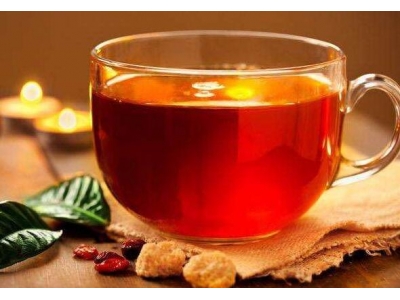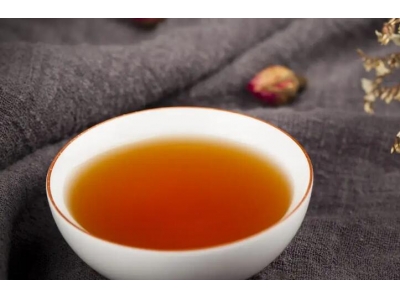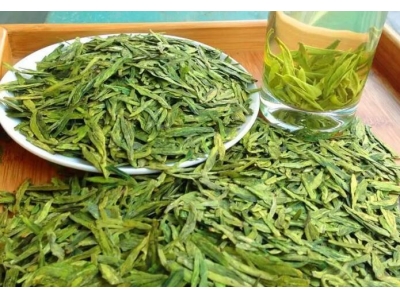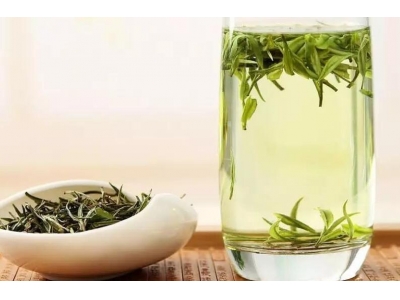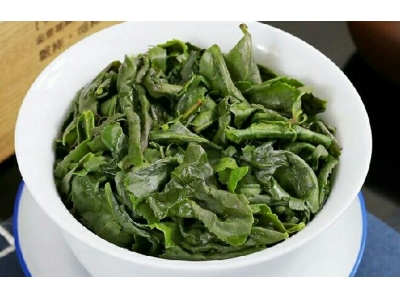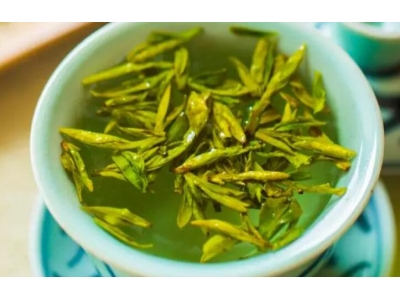chinese tea是红茶还是绿茶?
一、chinese tea是红茶还是绿茶?
chinese tea泛指中国茶,而中国是世界上的茶叶生产与饮用大国,有着丰富的茶叶品种与齐全的种类,目前主要有黄茶、绿茶、白茶、乌龙茶、红茶、黑茶六大类以及再加工茶,而这些茶类之下,仍有上千种茶叶品种,且茶叶品质优良,因此声名远播,而中国茶便是一种茶与文化的代名词,因此称之为chinese tea。
二、China tea与Chinese tea有什么区别?
前者不符合语法因为china是名词,Chinese是形容词,后接名词tea,所以后者正确,意思是:中国的茶或中国茶
三、Introduction to Chinese Tea Culture
Overview of Chinese Tea Culture
Chinese tea culture, with a history of thousands of years, is an integral part of traditional Chinese culture. It is not only about drinking tea, but also embodies profound social and spiritual connotations.
The Origins of Chinese Tea Culture
The history of Chinese tea culture can be traced back to ancient times. Legend has it that the Chinese Emperor Shennong discovered tea by accident around 2737 BC. Since then, tea has been deeply rooted in Chinese daily life and has become an indispensable part of traditional Chinese culture.
The Diversity of Chinese Tea
Chinese tea can be categorized into several types, including green tea, black tea, white tea, oolong tea, and dark tea. Each type has its own unique characteristics in terms of taste, aroma, and brewing methods.
The Art of Chinese Tea Ceremony
The Chinese tea ceremony, also known as "the way of tea" or "茶道 (chá dào)" in Chinese, is a traditional culture that focuses on the preparation, serving, and drinking of tea. It emphasizes etiquette, tranquility, and respect for the tea, which reflects the essence of Chinese traditional culture.
The Significance of Chinese Tea Culture
Chinese tea culture has a profound influence on various aspects of Chinese society, including philosophy, medicine, art, and daily etiquette. It has also been widely appreciated and inherited by people around the world, contributing to the diversity of global tea culture.
In conclusion, Chinese tea culture is an embodiment of Chinese traditional philosophy and an important symbol of Chinese social etiquette. Its profound influence on Chinese society and its unique charm have made it an indispensable part of Chinese civilization.
Thank you for reading this introduction to Chinese tea culture. Understanding the essence of Chinese tea culture can provide insights into the profound traditions and values of Chinese society.
四、The Characteristics of Liu Bao Tea: A Unique Chinese Tea
Introduction to Liu Bao Tea
Liu Bao tea, also known as "六堡茶" in Chinese, is a type of dark tea that originated in Guangxi Province, China. It is famous for its unique characteristics and rich history.
History and Origins
Liu Bao tea has a history of over 1,000 years, making it one of the oldest teas in China. It is produced in the Wuzhou and Liuzhou areas of Guangxi Province, where the climate and environment are ideal for growing tea plants.
Characteristics of Liu Bao Tea
Liu Bao tea is distinguished by its dark, large, and tightly compressed leaves. When brewed, it produces a deep red liquor with a smooth and mellow flavor. The tea has a unique earthy aroma and a sweet aftertaste, which sets it apart from other Chinese teas.
Health Benefits
Like other types of tea, Liu Bao tea offers a range of health benefits. It is believed to aid in digestion, reduce cholesterol levels, and provide a source of antioxidants. Regular consumption of Liu Bao tea is also associated with improved heart health and overall well-being.
Cultural Significance
In Chinese culture, Liu Bao tea has a special place. It is often enjoyed during important family gatherings and is considered a symbol of hospitality and warmth. The tea ceremonies involving Liu Bao tea reflect the deep-rooted traditions and customs of the Chinese people.
Conclusion
In conclusion, Liu Bao tea stands out for its unique characteristics, long history, and cultural significance. Its distinct flavor, health benefits, and cultural importance make it a beloved part of the Chinese tea tradition.
Thank you for reading about the characteristics of Liu Bao tea! We hope this article has provided you with a better understanding of this unique Chinese tea and its significance. Enjoy a cup of Liu Bao tea and experience its rich flavors and cultural heritage.
五、Mastering the Art of Tea: Showcasing the Elegance of Chinese Tea Culture
Introduction to the Art of Tea
Tea, as an indispensable part of Chinese culture, has a history of thousands of years. The art of tea, also known as "茶艺" (cháyì) in Chinese, encompasses not only the preparation and serving of tea, but also the appreciation of tea and the rich culture and traditions surrounding it. As the world becomes increasingly fascinated by the charm of Chinese tea culture, showcasing the art of tea in English has become a widely recognized and important practice.
The Significance of Showcasing Tea Art in English
Showcasing the art of tea in English serves as a bridge for cultural communication and exchange. It allows people from different cultural backgrounds to gain a deeper understanding of the profound connotations of Chinese tea culture. Moreover, it contributes to the promotion and inheritance of traditional Chinese craftsmanship, enhancing cultural confidence and soft power on the global stage.
Methods for Showcasing Tea Art in English
1. English Language Training for Tea Art Professionals: It is essential for tea art professionals to possess a certain level of English proficiency in order to effectively communicate the essence of Chinese tea culture to international audiences. Providing English language training programs specifically tailored to tea art can greatly enhance the ability of practitioners to showcase the art of tea in English.
2. English-Friendly Tea Art Performances and Demonstrations: Designing tea art performances and demonstrations that cater to English-speaking audiences can effectively convey the elegance and grace of Chinese tea culture. This includes providing bilingual explanations and interpretations to facilitate a deeper understanding of the rituals and significance behind the art of tea.
3. English Promotional Materials and Online Platforms: Creating promotional materials such as brochures, videos, and websites in English can extensively reach global audiences. Through these materials, the beauty of the art of tea can be vividly presented, attracting more people to explore and experience the charm of Chinese tea culture.
Benefits of Showcasing Tea Art in English
Showcasing the art of tea in English not only promotes cultural exchange and mutual learning, but also stimulates the development of related industries. From tourism to the hospitality sector, the influence of the art of tea extends to various aspects of the economy, enhancing cultural tourism and contributing to the sustainable development of the tea industry.
Conclusion
In a world that increasingly values cultural diversity and mutual understanding, showcasing the art of tea in English plays a vital role in promoting the inheritance and innovation of Chinese tea culture. By breaking language barriers and sharing the essence of tea art with the world, we contribute to the enrichment of global cultural heritage and the building of a community with a shared future for mankind.
Thank you for taking the time to read this article, and it is hoped that through this piece, readers can gain a deeper understanding of the importance and impact of showcasing the art of tea in English.
六、Invitation to Chinese Tea Culture Exhibition
Introduction
Dear [Recipient's Name],
We are delighted to invite you to the Chinese Tea Culture Exhibition, which will be held in [Location] from [Date] to [Date]. This exhibition aims to showcase the rich history and exquisite art of Chinese tea culture, providing visitors with a unique opportunity to experience the essence of traditional Chinese tea ceremonies and appreciate the diversity of Chinese tea culture.
Exhibition Highlights
- Exquisite Tea Sets: Explore a collection of delicate and elegant Chinese tea sets, each with its own unique craftsmanship and cultural significance.
- Interactive Tea Ceremonies: Participate in interactive demonstrations of traditional Chinese tea ceremonies, where you can learn the art of brewing, serving, and enjoying tea in the Chinese way.
- Tea Art and Calligraphy Display: Admire the beauty of Chinese tea-themed art and calligraphy, which reflect the harmony and elegance of tea culture.
- Tea Tasting Experience: Indulge your senses in a variety of authentic Chinese teas, from classic green and black teas to fragrant floral and herbal blends.
- Lectures and Workshops: Engage in insightful lectures and workshops conducted by renowned tea masters, providing an in-depth understanding of Chinese tea history and culture.
Event Details
Date: [Date]
Time: [Time]
Venue: [Location]
We sincerely hope that you can join us in celebrating the beauty and tranquility of Chinese tea culture. Your presence at the exhibition will undoubtedly enrich the experience for all attendees.
Please RSVP by [RSVP Date] to confirm your attendance. If you have any further inquiries, feel free to contact us at [Contact Information].
Conclusion
We look forward to welcoming you to the Chinese Tea Culture Exhibition and sharing the profound heritage of Chinese tea culture with you.
Sincerely, [Your Name]
七、Exploring the Rich Traditions of Chinese Tea Culture
When it comes to the world of tea, there's no denying that China holds a special place. Its long and illustrious history, cultural significance, and diverse range of tea varieties have captivated the hearts and taste buds of people around the globe. In this article, we will embark on a journey to explore the rich traditions of Chinese tea culture and unravel the secrets behind its enduring popularity.
The Origins of Chinese Tea Culture
Chinese tea culture has a history that spans thousands of years, with its roots tracing back to ancient legends and mythical tales. According to one popular legend, the discovery of tea dates back to the reign of Emperor Shen Nong, who is revered as the "Divine Farmer" in Chinese mythology. As the story goes, while boiling water in the shade of a wild tea tree, some leaves drifted into the pot, resulting in the world's first cup of tea. This serendipitous event marked the beginning of China's enduring love affair with tea.
The Art of Chinese Tea Preparation
Central to Chinese tea culture is the art of tea preparation, which is steeped in tradition and ritual. The traditional Chinese tea ceremony, with its precise movements and attention to detail, embodies the harmony between nature, human, and spirit. Whether it's the graceful choreography of a Gongfu tea ceremony or the tranquil elegance of a traditional Chaoshan tea serving, each ceremony reflects the unique characteristics of the tea, the region, and the cultural heritage it represents.
The Diversity of Chinese Tea
China is home to a dazzling array of tea varieties, each with its own distinct flavors, aromas, and health benefits. From the delicate fragrance of Green tea to the robust and earthy notes of Pu-erh tea, the diversity of Chinese tea never ceases to amaze. Whether it's the refined Oolong tea or the floral-scented Jasmine tea, there's a tea for every palate and occasion.
The Cultural Significance of Chinese Tea
Chinese tea culture extends far beyond the simple act of drinking tea; it is deeply intertwined with philosophy, religion, and social customs. Tea has been a source of inspiration for poets, scholars, and artists, who have extolled its virtues in literature, paintings, and calligraphy. The principles of harmony, respect, purity, and tranquility are embodied in the essence of Chinese tea culture, enriching the spiritual and social dimensions of life.
Chinese Tea in the Modern World
Though steeped in tradition, Chinese tea culture continues to evolve and thrive in the modern world. From bustling teahouses in urban metropolises to serene tea plantations in the countryside, the allure of Chinese tea remains as strong as ever. Moreover, as the global appreciation for tea grows, Chinese tea has found its way onto the international stage, with people from different cultures embracing its flavors and rituals.
In conclusion, the traditions, rituals, and heritage of Chinese tea culture continue to leave an indelible mark on the world, captivating tea enthusiasts and cultural aficionados alike. Through the exploration of its origins, art, diversity, significance, and modern influences, we gain a deeper appreciation for the profound influence of Chinese tea culture on the fabric of our global society.
Thank you for taking the time to delve into the world of Chinese tea culture with us. We hope this article has provided a greater understanding of the cultural and historical significance of Chinese tea, as well as an appreciation for the diverse and enchanting world of Chinese tea varieties. Cheers to the ancient traditions and timeless pleasures that Chinese tea culture brings to our lives!
八、Exploring the Fascinating World of Chinese Tea Culture
Chinese tea culture, with its deep-rooted history and exquisite traditions, offers a profound and enriching experience for tea enthusiasts around the world. From the origins of tea in China to the diverse varieties of tea and the elegant tea ceremonies, there is much to explore and appreciate.
The Origins of Chinese Tea
Dating back thousands of years, China is the birthplace of tea. Legend has it that Emperor Shen Nong discovered tea when the leaves from a wild tree blew into his pot of boiling water. Since then, tea has been an integral part of Chinese culture, not only for its refreshing taste but also for its medicinal properties.
The Variety of Chinese Teas
China boasts a rich tapestry of tea varieties, each with its own distinct flavor, aroma, and health benefits. From the delicate white tea to the robust black tea, and from the fragrant jasmine tea to the renowned oolong tea, there is a tea for every palate and occasion.
The Art of Chinese Tea Ceremony
Central to Chinese tea culture is the art of the traditional tea ceremony, a harmonious display of grace, respect, and mindfulness. The intricate rituals, from preparing and presenting the tea to the etiquette of serving and sipping, epitomize the essence of Chinese hospitality and culture.
Embracing Chinese Tea Culture Today
Immersing oneself in Chinese tea culture offers a unique way to appreciate the beauty and serenity of life. Whether through participating in a traditional tea ceremony, savoring the diverse flavors of Chinese tea, or simply taking a moment to reflect over a cup of tea, the experience is sure to leave a lasting impression.
Thank you for taking the time to explore the captivating world of Chinese tea culture. May this article inspire you to embark on your own journey of discovery and appreciation for the art of Chinese tea.
九、The Essence of Chinese Tea Culture: A Brief Introduction
China, known as the birthplace of tea, has a rich and profound tea culture that has evolved over thousands of years. From the humble origins of Camellia Sinensis to the elaborate tea ceremonies, Chinese tea culture embodies the essence of tradition, philosophy, and aesthetics.
The Origins of Chinese Tea Culture
The history of Chinese tea culture dates back to ancient times, with the discovery of tea attributed to legendary figures such as Shennong, the "Divine Farmer." As the tradition of tea drinking spread, it became an integral part of Chinese daily life, social customs, and even religious practices.
The Role of Tea in Chinese Society
Tea plays a significant role in Chinese society, serving as a symbol of respect, hospitality, and harmony. Whether in formal settings or casual gatherings, the act of serving and drinking tea reflects the values of harmony, respect, and tranquility.
The Art of Chinese Tea Ceremony
The Chinese tea ceremony is an intricate and elegant performance that embodies the principles of harmony, reverence, and purity. Each movement and gesture holds profound meaning, creating a space for contemplation and appreciation of the present moment.
Categories of Chinese Tea
Chinese teas are renowned for their diversity and exquisite flavors, with main categories including green tea, black tea, oolong tea, white tea, yellow tea, and pu-erh tea. Each type carries its own unique characteristics and health benefits.
Modern Influence and Global Reach
While preserving its rich traditions, Chinese tea culture has also embraced modern innovations, leading to the development of tea tourism, tea artistry, and commercial production. Moreover, the global interest in Chinese tea continues to grow, with enthusiasts worldwide seeking to immerse themselves in the essence of this ancient tea culture.
Thank you for exploring the essence of Chinese tea culture with us. We hope this brief introduction has provided insight into the profound traditions and values encapsulated within the art of Chinese tea.
十、The Rich History and Traditions of Chinese Tea Culture
Chinese tea culture is a rich and ancient tradition that has been an integral part of the country's history and way of life for thousands of years. From the earliest records of tea cultivation and consumption to the modern-day appreciation of its diverse varieties and brewing methods, the story of tea in China is one of cultural significance, artistic expression, and deep-rooted customs.
The Origins of Chinese Tea
The origins of tea in China can be traced back to the Shang Dynasty (1600-1046 BCE), where the earliest written records mention the use of tea as a medicinal and ceremonial beverage. Legend has it that the emperor Shennong, considered the father of Chinese medicine, discovered the benefits of tea leaves when they accidentally fell into his boiling water. This chance encounter is said to have sparked the beginning of the country's long-standing love affair with tea.
Over the centuries, the cultivation and consumption of tea spread throughout China, with different regions developing their own unique tea varieties and brewing traditions. The Tang Dynasty (618-907 CE) is often considered the golden age of Chinese tea culture, as the court's appreciation for the beverage led to the establishment of formal tea ceremonies and the publication of the first known treatise on tea, the "Classic of Tea" by Lu Yu.
The Diversity of Chinese Tea
China is home to a vast array of tea types, each with its own distinct flavor profile, processing method, and cultural significance. From the delicate and fragrant green teas of Zhejiang and Anhui provinces to the robust and earthy pu-erh teas of Yunnan, the diversity of Chinese tea is a testament to the country's rich agricultural heritage and the ingenuity of its tea producers.
Beyond the well-known tea varieties, China also boasts a wealth of lesser-known regional teas, each with its own unique story and cultural significance. These include the white teas of Fujian, the oolong teas of Guangdong and Fujian, and the black teas of Anhui and Hunan.
The Art of Tea Brewing
The art of brewing tea in China is a highly refined and ritualized practice, with specific techniques and equipment used to bring out the best in each tea variety. From the delicate gongfu cha method, which involves the use of a small teapot and multiple infusions, to the more casual gaiwan brewing style, the way tea is prepared and served in China is a reflection of the country's deep respect for the beverage and its cultural significance.
Beyond the technical aspects of tea brewing, the Chinese tea ceremony is also a deeply symbolic and artistic practice, with the arrangement of the tea table, the selection of the tea ware, and the movements of the tea master all contributing to the overall experience. The tea ceremony is not just about the act of drinking tea, but rather a holistic expression of Chinese culture, philosophy, and aesthetics.
The Enduring Legacy of Chinese Tea Culture
Today, the legacy of Chinese tea culture continues to be felt around the world, with the country's tea varieties and brewing traditions influencing the way people enjoy and appreciate tea globally. From the rise of specialty tea shops and the growing popularity of tea-based beverages to the increasing recognition of tea as a healthy and sustainable alternative to other drinks, the influence of Chinese tea culture is undeniable.
As the world continues to discover the rich history and traditions of Chinese tea, it is clear that this ancient beverage will continue to hold a special place in the hearts and minds of people around the globe. Whether you are a seasoned tea enthusiast or a newcomer to the world of Chinese tea, there is always more to explore and appreciate in this enduring and captivating cultural tradition.
Thank you for reading this article on the rich history and traditions of Chinese tea culture. By understanding the origins, diversity, and brewing practices of this ancient beverage, you can gain a deeper appreciation for the cultural significance and artistic expression that are at the heart of this enduring tradition.

